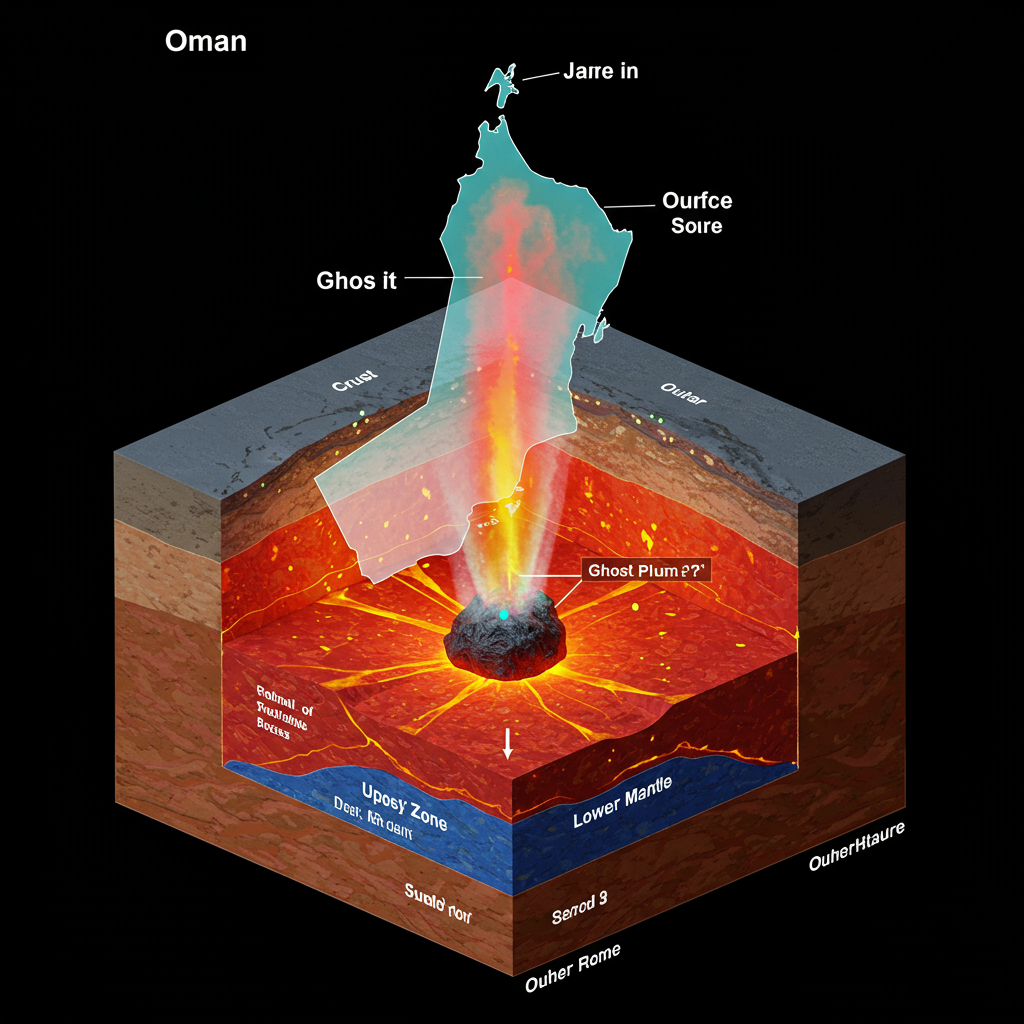Unveiling a Hidden Force Beneath the Middle East
Earth’s interior is a dynamic place, constantly shifting and influencing the surface above. Scientists have recently unearthed a previously unknown geological feature deep beneath Oman in the Middle East – a vast plume of hot rock in the mantle, the layer between the Earth’s crust and core. This isn’t just any plume; researchers are calling it a “ghost plume,” and its discovery is reshaping our understanding of how continents move and collide.
This newfound mantle plume, informally named “Dani” by the research team, could hold the key to explaining a significant event in Earth’s history: the dramatic collision of the Indian tectonic plate with the Eurasian plate tens of millions of years ago, which ultimately led to the formation of the Himalayas.
What is a ‘Ghost’ Mantle Plume?
Mantle plumes are colossal columns of hot material rising from near the boundary of Earth’s core. They are often associated with volcanic activity, like the one feeding the volcanoes in Hawaii. However, the “Dani” plume is different. It’s categorized as an “amagmatic ghost plume” because, despite its immense heat and upward pressure, it doesn’t trigger eruptions at the surface.
This unique characteristic stems from its location. The Dani plume is trapped beneath a particularly thick segment of Earth’s continental crust and the upper mantle. Unlike beneath thinner oceanic plates, the material under thick continents cannot rise high enough to undergo the pressure release necessary for melting and forming magma that reaches the surface.
According to lead author Simone Pilia, a geophysicist at King Fahd University of Petroleum and Minerals, the discovery challenges a long-held assumption that the lack of volcanoes on certain continental areas meant there were no underlying mantle plumes. He aptly notes, “absence of evidence is not evidence of absence.” The Dani plume proves that these hidden, non-volcanic plumes can exist.
How Scientists Found the Hidden Plume
Locating something so deep underground, especially one that doesn’t announce itself with volcanic activity, is a complex task. Researchers discovered the Dani plume by analyzing seismic wave data. These are sound waves generated by earthquakes or other disturbances that travel through Earth’s layers at different speeds depending on the density and composition of the material they encounter.
Oman’s extensive network of seismic recording stations provided the detailed data needed to map the subsurface structures. By carefully studying how seismic waves traveled through the region, scientists were able to detect the presence of hotter, less dense material consistent with a mantle plume beneath the Salma Plateau in Oman. The plateau itself, which reaches elevations up to 6,600 feet (2,000 meters), might even be a surface manifestation of the plume’s upward push, suggesting it remains active.
A Force That Could Reroute Continents
The most compelling implication of the Dani plume’s discovery relates to the movement of tectonic plates. The plume is estimated to be at least 40 million years old, a timeline that overlaps significantly with the period when the Indian plate was rapidly moving northward and colliding with the Eurasian plate (roughly 40 to 25 million years ago).
By reconstructing the historical path of the Indian plate, researchers observed a subtle but significant change in its direction, or “azimuth,” during this critical phase of collision. Their subsequent calculations revealed that the intense “shear stress” – the force exerted by the plume’s upward push – was powerful enough to influence the massive tectonic plate above it.
While it was already known that mantle plumes can affect plate motion, this study is the first to directly link this specific directional change in the Indian plate’s journey to a particular, previously unknown plume. The Dani plume acted like an unseen obstacle or guide, subtly steering the colossal Indian landmass as it converged with Eurasia.
More ‘Ghost’ Plumes May Be Hiding
The researchers believe the Dani plume is likely not an isolated phenomenon. Pilia suggests that many other amagmatic “ghost” plumes could be lurking beneath continents, especially in regions with thick crust and upper mantle that suppress volcanism. Areas like parts of Africa, which sit above vast, deep mantle structures thought to feed plumes, are potential candidates for harboring similar hidden features.
Tracing the full history of the Dani plume’s interaction with the Indian plate is challenging. As the plate moved, it would have passed over the plume, potentially leaving geological evidence. However, any such evidence on the Indian plate has likely been lost forever, swallowed and erased by the Makran subduction zone off the coasts of Pakistan and Iran where one plate is diving beneath another.
The discovery of the Dani plume, published in the journal Earth and Planetary Science Letters, underscores the complexity of Earth’s inner workings and highlights how forces deep within our planet continue to shape the continents we inhabit. These hidden “ghosts” of the mantle may play a far larger role in tectonic history than previously imagined.




